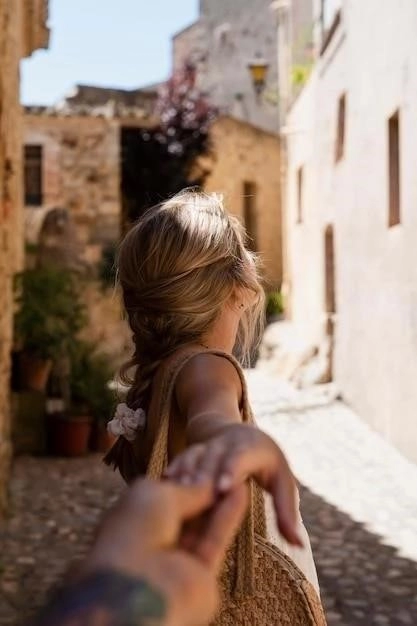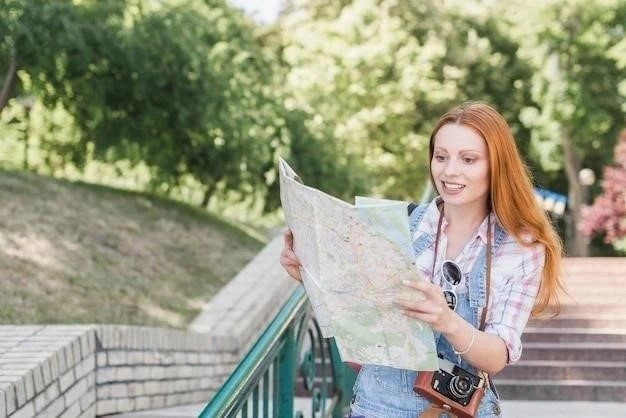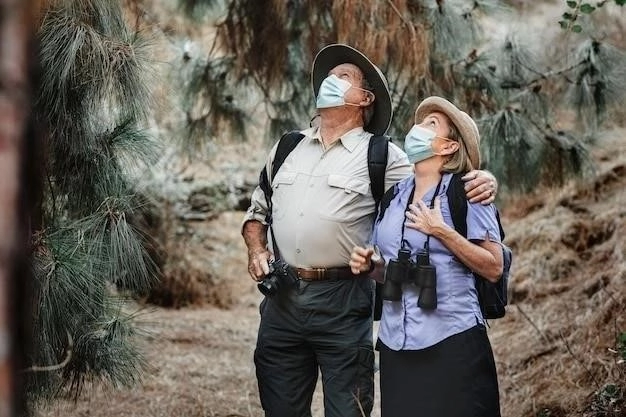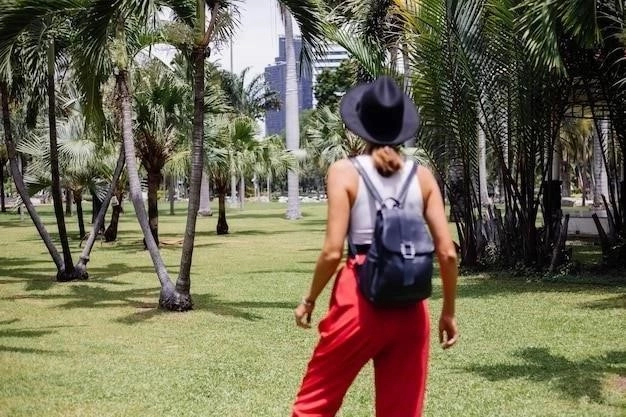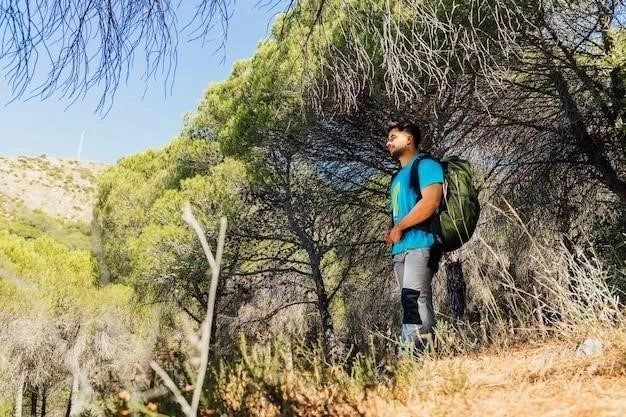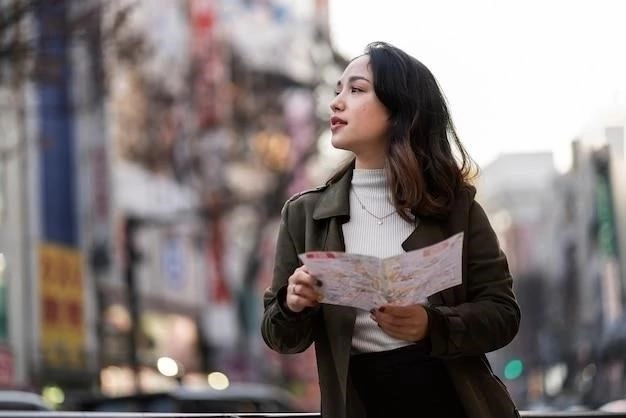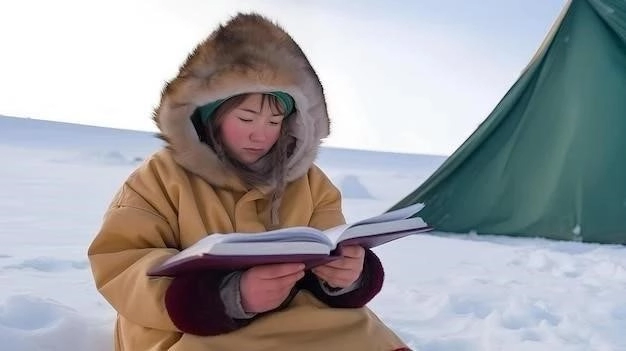Morocco Travel Guide 2024
Embark on an unforgettable journey to Morocco in 2024 and discover a land of vibrant culture, stunning landscapes, and ancient history. From bustling souks to serene deserts, Morocco offers a tapestry of experiences for every traveler.
Introduction
Morocco, a land of captivating beauty and rich cultural heritage, beckons travelers with its diverse landscapes, vibrant cities, and ancient traditions. Nestled in the northwest corner of Africa, where the majestic Atlas Mountains meet the vast Sahara Desert and the sparkling Mediterranean Sea kisses the Atlantic Ocean, Morocco offers a sensory tapestry of sights, sounds, and experiences unlike any other. From the bustling souks of Marrakech, where the air is thick with the scent of exotic spices and the sound of merchants hawking their wares, to the tranquil blue-washed streets of Chefchaouen, a haven of peace and tranquility, Morocco is a country of contrasts that will leave a lasting impression on your soul. Whether you seek adventure in the Sahara Desert, cultural immersion in the ancient medinas, or relaxation on the sun-kissed beaches, Morocco promises an unforgettable journey of discovery and wonder.
Best Time to Visit Morocco
Morocco, with its diverse landscapes and regional variations in climate, offers pleasant travel experiences throughout the year. However, the optimal time to visit depends largely on your preferred activities and tolerance for varying temperatures. Generally, spring (March to May) and fall (September to November) emerge as the ideal periods to explore this North African gem. During these shoulder seasons, the weather presents a delightful balance—warm, sunny days with comfortable evenings, perfect for exploring ancient medinas, traversing the Atlas Mountains, or venturing into the Sahara Desert. The coastal areas, tempered by ocean breezes, provide respite from the inland heat, making them ideal for beachgoers. However, if you seek the warmth of the Moroccan sun and wish to bask on its golden shores, summer (June to August) provides the perfect setting, particularly in coastal cities like Essaouira and Tangier. While the desert heat might prove intense during these months, the cooler evenings offer a welcome reprieve.
Top Tourist Attractions in Morocco
Morocco, a land of captivating beauty and cultural richness, boasts a treasure trove of tourist attractions that cater to every interest. From ancient cities steeped in history to breathtaking natural wonders, Morocco’s diverse landscapes and vibrant culture promise an unforgettable journey for every traveler. Embark on a captivating exploration of Morocco’s top tourist attractions, each offering a unique glimpse into the heart and soul of this North African gem.
Prepare to be enchanted by the bustling souks of Marrakech, where the air is thick with the scent of exotic spices and the sound of merchants hawking their wares. Lose yourself in the labyrinthine alleyways of the medina, a UNESCO World Heritage site, and marvel at the architectural grandeur of the Bahia Palace and the Saadian Tombs. Venture beyond the city walls to discover the tranquility of the Jardin Majorelle, a botanical oasis designed by the French painter Jacques Majorelle.
For a truly awe-inspiring experience, journey into the heart of the Sahara Desert, a vast expanse of golden sand dunes that stretch as far as the eye can see. Embark on a camel trek under the starlit sky, spend a night in a traditional Berber camp, and witness the mesmerizing beauty of the desert sunrise.
Escape to the blue-washed streets of Chefchaouen, a charming town nestled in the Rif Mountains, where the buildings are painted in various shades of blue, creating a picturesque and serene atmosphere. Stroll through the narrow alleyways, discover hidden courtyards, and soak up the tranquility of this unique destination.
3.1. Marrakech
Marrakech, the “Red City” of Morocco, is a vibrant metropolis that embodies the soul of this captivating country. Stepping into Marrakech is akin to stepping back in time, where ancient traditions intertwine seamlessly with modern life. The heart of Marrakech pulsates within the labyrinthine alleyways of its medina, a UNESCO World Heritage site that has remained largely unchanged for centuries. Here, a kaleidoscope of sights, sounds, and scents awaits—from the vibrant souks overflowing with colorful textiles, aromatic spices, and intricate handicrafts to the hidden courtyards adorned with tranquil fountains and the aroma of freshly brewed mint tea.
Amidst the bustling energy of the medina, find solace in the tranquil oasis of the Jardin Majorelle, a botanical garden designed by the French painter Jacques Majorelle and later restored by Yves Saint Laurent. The garden’s vibrant blue hues, known as Majorelle Blue, create a striking contrast against the lush greenery and exotic flora, offering a serene escape from the city’s vibrant chaos.
As the sun begins its descent, venture to the Djemaa el-Fna, the heart of Marrakech’s nightlife and a stage for a captivating spectacle of storytellers, musicians, dancers, and street food vendors. Here, amidst the swirling smoke of grilling brochettes and the rhythmic beat of traditional Berber drums, immerse yourself in the vibrant energy of Marrakech’s soul.
3.2. Chefchaouen
Nestled amidst the rugged peaks of the Rif Mountains in northern Morocco, Chefchaouen, also known as the “Blue Pearl,” is a city that captivates the senses with its ethereal beauty and tranquil ambiance. Unlike the bustling energy of Marrakech or Fes, Chefchaouen exudes a sense of serenity, inviting visitors to wander its narrow, blue-washed alleyways at a leisurely pace, soaking in the unique charm and artistic spirit that permeate every corner. Founded in 1471 as a strategic stronghold against Portuguese invaders, Chefchaouen’s history is as rich and varied as its palette of blue hues.
The city’s iconic blue walls, a tradition believed to have originated with Jewish refugees who sought refuge in Chefchaouen during the 15th century, create a mesmerizing visual tapestry that has captivated artists, photographers, and travelers for generations. Beyond its aesthetic allure, Chefchaouen offers a sanctuary for those seeking respite from the demands of modern life. The gentle sound of fountains trickling in hidden courtyards, the aroma of freshly baked bread wafting from local bakeries, and the friendly smiles of its inhabitants create an ambiance of tranquility that is both soothing and invigorating.
As you explore the labyrinthine alleyways of the medina, be sure to venture beyond the main thoroughfares to discover hidden gems—quaint cafes serving traditional Moroccan mint tea, artisan workshops showcasing the craftsmanship of local artisans, and breathtaking panoramic views of the surrounding Rif Mountains.
3.3. Essaouira
Essaouira, a charming coastal city on Morocco’s Atlantic coast, exudes a captivating blend of bohemian spirit, ancient history, and natural beauty. With its white-washed buildings, vibrant blue fishing boats, and a constant sea breeze carrying the scent of salt and spices, Essaouira offers a refreshing contrast to the bustling energy of Morocco’s inland cities. Essaouira’s rich history is deeply intertwined with its strategic location on the Atlantic coast. Once known as Mogador, the city has been a coveted trading port for centuries, attracting Phoenicians, Romans, and Portuguese, all leaving their mark on its architecture and culture.
Today, Essaouira’s medina, a UNESCO World Heritage site, stands as a testament to its storied past. Explore its labyrinthine alleyways, where white-washed buildings adorned with colorful murals line cobblestone streets, leading to hidden courtyards and bustling souks. Beyond its historical significance, Essaouira is renowned for its artistic spirit. The city has long been a haven for artists and musicians, drawn to its laid-back ambiance, vibrant colors, and the inspiring energy of the Atlantic Ocean.
As the sun sets, Essaouira’s harbor transforms into a captivating spectacle as fishing boats return with their daily catch, their blue hulls glowing in the golden light. Wander through the bustling fish market, where locals haggle over freshly caught seafood, and savor the flavors of the ocean at one of the many restaurants lining the harbor.

3.4. Sahara Desert
Venturing into the Sahara Desert is an experience that transcends the boundaries of ordinary travel; it is a journey into a realm of vastness, silence, and breathtaking beauty that resonates deep within the soul. The Sahara, the world’s largest hot desert, stretches across North Africa, encompassing much of Morocco’s eastern and southern regions. Here, amidst the undulating sand dunes that shift and shimmer under the scorching sun, a sense of awe and wonder washes over travelers, leaving an indelible mark on their memories.
Embark on a camel trek across the golden expanse, guided by the wisdom of experienced Berber nomads who have traversed these ancient caravan routes for centuries. As you sway rhythmically atop your camel, the silence of the desert envelops you, broken only by the gentle whisper of the wind and the soft padding of hooves on the sand. As the sun begins its descent, casting long shadows across the dunes, witness a spectacle of unparalleled beauty—the Sahara sunset. The sky transforms into a canvas of vibrant hues, from fiery oranges and deep reds to soft pinks and purples, creating a breathtaking panorama that will leave you speechless.
As darkness descends, a blanket of stars emerges, illuminating the desert night with a celestial brilliance rarely seen elsewhere. Spend a night in a traditional Berber camp, where you’ll be welcomed with the warmth and hospitality that is synonymous with these desert nomads. Gather around a crackling fire, savor a traditional tagine cooked over an open flame, and listen to tales of the desert whispered under the starlit sky.
3.5. Fes
Fes, the spiritual and cultural heart of Morocco, beckons travelers with its labyrinthine alleyways, ancient traditions, and captivating blend of history and artistry. Founded in the 8th century, Fes is one of Morocco’s oldest imperial cities, its heart a UNESCO World Heritage site that transports visitors to a bygone era. Step through the imposing gates of Fes el-Bali, the city’s ancient medina, and prepare to be transported back in time. Here, amidst a labyrinth of narrow, winding alleyways, where donkeys laden with goods jostle for space with merchants hawking their wares, lies a world teeming with life, color, and a sensory overload that is both exhilarating and overwhelming.
Lose yourself in the maze of souks, where the air is thick with the scent of spices, leather, and freshly baked bread. Marvel at the skill of artisans practicing traditional crafts—from intricate tilework and colorful ceramics to finely tooled leather goods and shimmering silk scarves. Amidst the bustling energy of the medina, discover hidden gems—ancient courtyards adorned with intricate zellij tilework, tranquil fountains whispering tales of bygone eras, and the aroma of freshly brewed mint tea beckoning you to pause and savor the moment.

No visit to Fes is complete without experiencing the Chouara Tannery, a testament to the city’s ancient leatherworking traditions. Witness the age-old process of transforming animal hides into supple leather, a sensory experience that is both fascinating and pungent.
3.6. Casablanca
Casablanca, Morocco’s largest city and economic hub, often evokes images of Humphrey Bogart and Ingrid Bergman in the iconic film that bears its name. While the city may not be the romantic wartime escape portrayed on screen, Casablanca possesses a unique charm, blending modern architecture with remnants of its colonial past and a vibrant, cosmopolitan atmosphere that sets it apart from other Moroccan cities. Casablanca’s heart beats to the rhythm of commerce and industry, a bustling metropolis where towering skyscrapers stand as testaments to Morocco’s economic growth. Yet, beneath its modern facade lies a city rich in history, culture, and a certain alluring mystique.

No visit to Casablanca is complete without a visit to the Hassan II Mosque, one of the largest mosques in the world and a masterpiece of modern Islamic architecture. Its towering minaret, the tallest in the world, dominates the Casablanca skyline, a beacon of faith visible for miles around. Stroll along the Corniche, Casablanca’s vibrant waterfront promenade, where the air is alive with the sound of crashing waves, the scent of freshly grilled seafood, and the laughter of families enjoying the sea breeze.
Escape the city bustle in the serene oasis of the Parc de la Ligue Arabe, a sprawling urban park inspired by French garden design, or wander through the Quartier Habous, a neighborhood built by the French in the 1930s, with its white-washed buildings, arched doorways, and a labyrinthine network of shops selling traditional Moroccan crafts.
3.7. Tangier
Perched on the northwestern tip of Africa, where the Mediterranean Sea meets the Atlantic Ocean, Tangier is a city of alluring contrasts, a melting pot of cultures and influences that has captivated artists, writers, and adventurers for centuries. Tangier’s strategic location at the crossroads of continents has shaped its identity throughout history. From its ancient origins as a Phoenician trading post to its days as an international zone, Tangier has long been a place where cultures collide and coexist, creating a unique and captivating atmosphere.
Explore the Kasbah, Tangier’s historic fortress, perched high above the city, offering breathtaking panoramic views of the Strait of Gibraltar and the distant Spanish coastline. Wander through its narrow, winding alleyways, where white-washed buildings adorned with colorful bougainvillea lead to hidden courtyards and bustling cafes. Descend into the heart of the medina, a labyrinth of narrow streets and bustling souks, where the air is thick with the scent of spices, incense, and freshly baked bread. Here, amidst a cacophony of sights and sounds, experience the true essence of Tangier—a vibrant tapestry of cultures and traditions.
Escape the city bustle with a visit to Cape Spartel, the northwesternmost point of mainland Africa, where the Atlantic Ocean meets the Mediterranean Sea in a dramatic clash of currents.
Moroccan Culture and Customs
Morocco, a land steeped in ancient traditions and vibrant customs, offers travelers a captivating glimpse into a culture that is both diverse and deeply rooted in its Arab-Berber heritage. To truly appreciate the beauty of Morocco, it’s essential to approach its people and their way of life with respect and sensitivity. Moroccans are renowned for their warm hospitality and welcoming nature. It’s customary to greet people with a friendly “Salam” or “As-salamu alaykum” (peace be upon you), accompanied by a gentle handshake or a slight nod of the head. When entering a home or mosque, it’s customary to remove your shoes as a sign of respect.
Moroccan society places great importance on modesty, particularly in dress and demeanor. While visitors are not expected to fully adopt traditional attire, it’s advisable to dress conservatively, especially when visiting religious sites or rural areas. Women, in particular, are encouraged to cover their shoulders and knees.
Family plays a central role in Moroccan culture, and respect for elders is highly valued. It’s not uncommon to see several generations living together under one roof, and family gatherings are frequent and lively affairs.

Moroccan Cuisine
Moroccan cuisine is a delightful fusion of flavors, aromas, and culinary traditions, a testament to the country’s rich history and diverse cultural influences. From fragrant tagines simmered in earthenware pots to delicate pastries drizzled with honey and sprinkled with almonds, Moroccan food is a feast for the senses, a culinary adventure that will tantalize your taste buds and leave you craving for more. At the heart of Moroccan cuisine lies the tagine, a slow-cooked stew that takes its name from the earthenware pot in which it is prepared. Tagines typically feature tender meats—lamb, beef, or chicken—marinated in a blend of aromatic spices such as cumin, turmeric, ginger, and saffron, and then slow-cooked with vegetables, dried fruits, and nuts, creating a symphony of flavors that melt in your mouth.
Couscous, a staple throughout North Africa, holds a special place in Moroccan cuisine. Made from steamed semolina granules, couscous is traditionally served as a bed for flavorful stews, vegetables, or meats, its delicate flavor absorbing the rich sauces and spices of the accompanying dishes.
No Moroccan meal is complete without the customary offering of mint tea, a symbol of hospitality and a refreshing beverage that is enjoyed throughout the day.
Accommodation in Morocco
Morocco offers a diverse array of accommodation options to suit every budget and travel style, from luxurious riads tucked away in the heart of ancient medinas to boutique hotels with rooftop terraces offering stunning views, and budget-friendly guesthouses catering to backpackers and adventurous souls. For an authentic Moroccan experience, consider staying in a traditional riad, a type of guesthouse with an interior courtyard or garden, often featuring intricate tilework, carved stucco, and a tranquil fountain. Riads offer a peaceful retreat from the bustle of the medina, providing a glimpse into the architectural heritage of Morocco.
If you prefer modern comforts and amenities, Morocco boasts a wide selection of hotels, ranging from international chains to locally owned boutique hotels. Many hotels, especially those in Marrakech and Fes, feature rooftop terraces offering panoramic views of the city, perfect for enjoying a sunset drink or a traditional Moroccan breakfast.
For budget-conscious travelers, guesthouses, known as “dar” or “auberge,” provide affordable and comfortable accommodation options. These smaller, often family-run establishments offer a more intimate and local experience, with the added benefit of personalized recommendations from your hosts.
Transportation in Morocco
Navigating the diverse landscapes and vibrant cities of Morocco is an adventure in itself, with a variety of transportation options available to suit every budget and travel style. Whether you prefer the convenience of modern train lines, the flexibility of private taxis, or the thrill of bargaining for a ride in a shared grand taxi, Morocco offers a transportation network that caters to every need. Morocco boasts a modern and efficient rail system, operated by ONCF (Office National des Chemins de Fer), connecting major cities such as Casablanca, Rabat, Marrakech, Fes, and Tangier. Train travel in Morocco offers a comfortable and scenic way to traverse the country, with modern carriages, air conditioning, and often, onboard Wi-Fi.
For shorter distances or travel to smaller towns and villages, grand taxis, easily identifiable by their beige color, provide a convenient and affordable option. These shared taxis typically depart when full, and passengers can negotiate the fare with the driver before setting off.
Within cities, petit taxis, typically brightly colored and smaller than grand taxis, offer an economical way to navigate the bustling streets. Be sure to negotiate the fare before starting your journey, as meters are not always used.
Safety and Security in Morocco
Morocco is generally a safe country for travelers, with a low crime rate and a welcoming and hospitable culture. However, like any destination, it’s essential to exercise common sense and take precautions to ensure your safety and well-being throughout your journey. Petty theft can be a concern, especially in crowded areas such as markets and tourist sites. It’s advisable to keep your valuables secure, avoid displaying large amounts of cash, and be aware of your surroundings.
As in any unfamiliar environment, it’s best to avoid walking alone at night, especially in poorly lit or deserted areas. If you must travel at night, consider taking a licensed taxi or arranging transportation through your accommodation.
When interacting with strangers, exercise caution and avoid sharing personal information or travel plans with individuals you’ve just met. It’s always a good idea to inform someone you trust of your whereabouts and itinerary.
Visa Requirements for Morocco
Before embarking on your Moroccan adventure, it’s essential to ensure you have the necessary travel documents, including a valid passport and, if required, a visa. Visa requirements for Morocco vary depending on your nationality. Citizens of many countries, including the United States, Canada, the United Kingdom, and most European Union countries, can enter Morocco for tourism or business purposes for up to 90 days without a visa. However, it’s crucial to verify the specific visa requirements for your nationality before your trip, as regulations can change. To enter Morocco without a visa, your passport must be valid for at least six months from the date of your arrival and have at least two blank pages for entry and exit stamps.
If your nationality requires a visa to enter Morocco, you can apply for a tourist visa at the Moroccan embassy or consulate in your home country. The visa application process typically involves submitting a completed visa application form, your passport (with at least six months of validity remaining), recent passport-sized photographs, proof of travel arrangements (such as flight itineraries and hotel bookings), and, in some cases, proof of financial means to support your stay in Morocco.
It’s highly recommended to apply for your visa well in advance of your intended travel dates, as processing times can vary.
Money and Currency Exchange in Morocco
The official currency of Morocco is the Moroccan Dirham (MAD), denoted by the symbol “DH.” When exchanging currency in Morocco, it’s generally advisable to do so upon arrival at authorized exchange bureaus, banks, or at the airport. Exchange rates can vary, so it’s a good idea to compare rates from different providers before exchanging a large amount of currency.
Major credit cards, such as Visa and Mastercard, are widely accepted in larger hotels, restaurants, and shops in Morocco’s major cities. However, smaller establishments and businesses in more rural areas may prefer cash payments. It’s always advisable to carry some local currency, especially when traveling outside of major tourist areas.
ATMs are readily available in cities and towns throughout Morocco, allowing you to withdraw local currency using your debit or credit card. However, it’s essential to notify your bank or credit card provider of your travel plans to avoid any issues with your card while abroad.

Health and Vaccinations for Morocco
Prior to embarking on your Moroccan adventure, it’s essential to prioritize your health and well-being by consulting with your healthcare provider or a travel medicine specialist regarding recommended vaccinations and necessary health precautions. While Morocco is generally a safe country for travelers, certain vaccinations are recommended to prevent potential health risks. These may include routine vaccinations such as measles, mumps, rubella (MMR), diphtheria, tetanus, pertussis (DTaP), polio, hepatitis A, and typhoid. Depending on your itinerary and planned activities, your healthcare provider may also suggest vaccinations for hepatitis B, rabies, and meningitis.
In addition to vaccinations, it’s crucial to pack a well-stocked first-aid kit containing essential medications, insect repellent, sunscreen, and any personal prescriptions you require.
When it comes to food and water safety, it’s generally advisable to consume bottled water and avoid tap water unless it has been boiled or purified. Be cautious with food from street vendors, opting for well-cooked and hot dishes from reputable establishments.
Language in Morocco
Morocco’s linguistic landscape is as diverse as its cultural tapestry, with a blend of languages reflecting its rich history and cultural influences. While the official languages of Morocco are Arabic and Amazigh (Berber), French holds a prominent place in daily life, particularly in business, government, and education. Classical Arabic, known as Modern Standard Arabic (MSA), is the language of administration, education, and the media. However, in everyday conversations, Moroccans typically use Darija, a dialect of Arabic that borrows words and phrases from French, Spanish, and Amazigh, making it a unique and colorful language to encounter.
Amazigh, the language of Morocco’s indigenous Berber population, is spoken in various dialects throughout the country, particularly in rural areas and in the Atlas Mountains. While Arabic is more widely spoken in urban centers, Amazigh remains an integral part of Morocco’s cultural heritage.
French, a legacy of Morocco’s colonial past, is widely spoken and understood, particularly in larger cities and among the educated elite.

Packing List for Morocco
Packing for a trip to Morocco requires careful consideration of the country’s diverse climate, cultural norms, and the activities you have planned. Whether you’re exploring bustling souks, trekking through the Atlas Mountains, or relaxing on the coast, a well-packed bag will ensure you’re prepared for every adventure. Comfortable walking shoes are essential for navigating the labyrinthine alleyways of ancient medinas and exploring historical sites. Choose lightweight, breathable options that provide adequate support for long days on your feet.
Morocco’s climate can vary significantly, so packing for a range of temperatures is crucial. Pack lightweight, breathable clothing for warmer days, as well as layers that can be easily added or removed, such as long-sleeved shirts, sweaters, and a light jacket or fleece for cooler evenings or higher altitudes.
Modest attire is essential, particularly for women, when visiting religious sites or conservative areas. Pack clothing that covers your shoulders and knees, such as long skirts, loose-fitting pants, and shirts with sleeves. A scarf or shawl can also be useful for covering your head or shoulders when appropriate.
Responsible Tourism in Morocco
As travelers, we have a responsibility to minimize our impact on the environment and contribute positively to the communities we visit. By embracing responsible tourism practices, we can ensure that Morocco’s natural beauty, cultural heritage, and the well-being of its people are preserved for generations to come. When choosing accommodation, consider staying in locally owned riads, guesthouses, or eco-friendly hotels that prioritize sustainable practices, such as water conservation, energy efficiency, and supporting local communities.
Morocco’s souks are a treasure trove of unique handicrafts, but it’s important to support ethical shopping practices. Bargaining is customary in Morocco, but it’s essential to do so respectfully and fairly, recognizing the value of the artisans’ skills and labor. When purchasing souvenirs, opt for authentic, locally made products that support Moroccan craftspeople.
Water is a precious resource in Morocco, especially in desert regions. Be mindful of your water consumption by taking shorter showers, reusing towels, and opting for reusable water bottles that can be refilled at designated stations.
Conclusion
As you bid farewell to the enchanting land of Morocco, the sights, sounds, and scents of your journey will linger in your memory long after you’ve returned home. From the vibrant souks of Marrakech to the tranquil blue streets of Chefchaouen, the sun-drenched beaches of Essaouira to the awe-inspiring expanse of the Sahara Desert, Morocco’s tapestry of experiences will leave an indelible mark on your soul. As you reflect on your Moroccan adventure, carry with you the warmth of Moroccan hospitality, the artistry of its craftspeople, and the resilience of its people, who have navigated centuries of cultural crossroads to forge a nation that embraces both tradition and modernity.

May your journey to Morocco inspire a deeper appreciation for the beauty of cultural diversity, the importance of sustainable travel, and the transformative power of embracing the unknown.
So, as you plan your next adventure, consider returning to the enchanting land of Morocco, where a thousand and one stories await to be discovered, and where the magic of this extraordinary country will continue to captivate your heart and mind.

